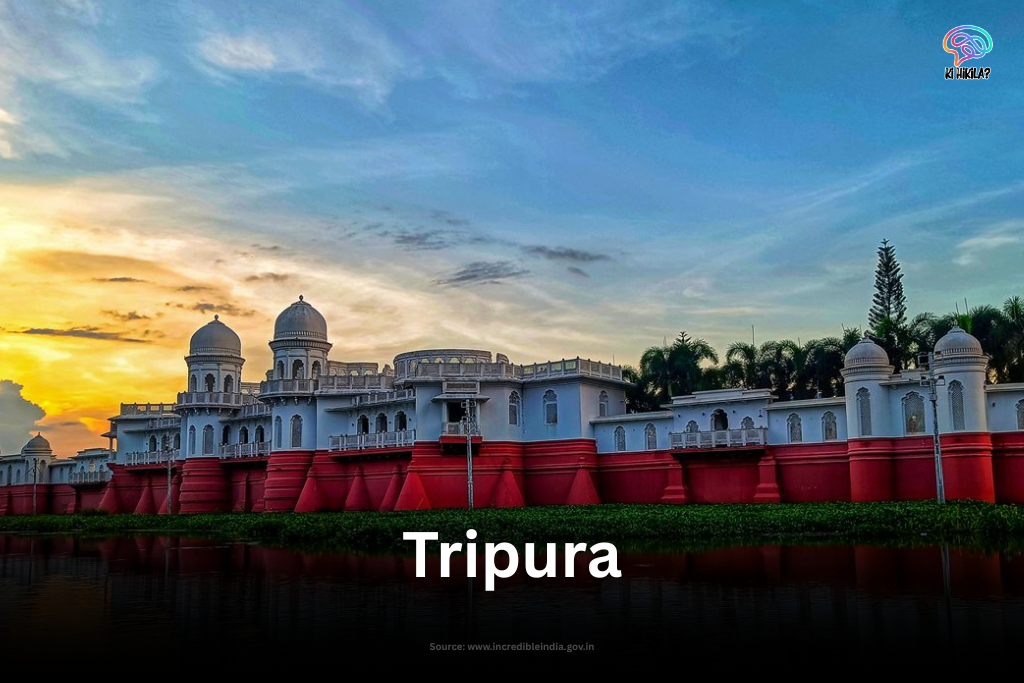Introduction
In the far northeast of India lies Tripura, a state shaped by quiet hills, ancient temples, and a heritage that flows through both tribal and Bengali traditions. Its size may be modest, but its identity is anything but—marked by vibrant festivals, sacred sites, and centuries-old craftsmanship rooted in the land.
Here, stories are etched into rock faces at Unakoti, echoed in the halls of royal palaces, and carried through generations in music, dance, and daily rituals. The capital, Agartala, reflects a balance of education, culture, and modern progress, while surrounding towns and villages preserve a rhythm of life that’s both grounded and graceful.
With a reputation for warmth, literacy, and calm, this northeastern state quietly invites curiosity—not through grandeur, but through the depth of its living traditions.
Brief About the Tripura State
Tripura, the third smallest state in India by both area and population, offers a rich cultural heritage and holds notable geopolitical significance. Enclosed on three sides by Bangladesh, it acts as a vital link between India and Southeast Asia, fostering both geographic and cultural exchange.
🔹 Quick Facts:
- Statehood: Became a full-fledged state on January 21, 1972
- Area: Approx. 10,491 sq. km
- Population (2011 Census): Around 3.67 million
- Official Languages: Bengali, Kokborok, and English
- Capital City: Agartala
- Total Districts: 8
Historically, this region was an independent kingdom under the rule of the Manikya dynasty for several centuries before its accession to the Indian Union in 1949. The legacy of that era continues to influence local architecture, literature, and cultural norms.
Its varied topography includes hilly stretches and fertile plains, inhabited by 19 tribal communities along with a Bengali-speaking majority. This cultural mosaic gives the area a distinct identity within the Northeast.
Known for a high literacy rate, rich traditions in art and craft, and developing eco-tourism destinations, the state presents a compelling subject for exploration and academic interest.
Location and Geography
Tripura is located in the northeastern region of India, and though compact in size, it holds significant strategic and ecological importance. The state is nestled between lush hills and river valleys, sharing an extensive international border with Bangladesh on three sides—north, west, and south—making up nearly 85% of its perimeter.
📌 Geographical Position:
- Latitude: 22°56′N to 24°32′N
- Longitude: 91°09′E to 92°20′E
- Elevation: Varies from 15 to 940 meters above sea level
- Bordered by:
Geographical Features:
- This region is predominantly hilly, with five main hill ranges running north to south:
- Jampui Hills
- Sakhantlang
- Longtharai
- Atharamura
- Baramura
These ranges create natural divisions and microclimates across the state.
- The state also has fertile alluvial plains and valleys, especially in West Tripura, where agriculture is concentrated.
- The climate is tropical and humid, influenced heavily by the Southwest monsoon, resulting in dense vegetation, evergreen forests, and abundant rainfall.
The state’s location, surrounded by Bangladesh and lined with rivers and forests, has given it a distinct blend of South Asian biodiversity and cultural exchange. Its isolation from the mainland has preserved much of its traditional lifestyle and natural landscapes, making it a unique case in India’s geography.
Historical Importance
Tripura’s history is a fascinating tale of dynastic rule, tribal sovereignty, cultural synthesis, and colonial encounters. It is one of the few Indian regions with a documented royal lineage that spans over 1,000 years, deeply influencing the state’s culture, politics, and architecture.
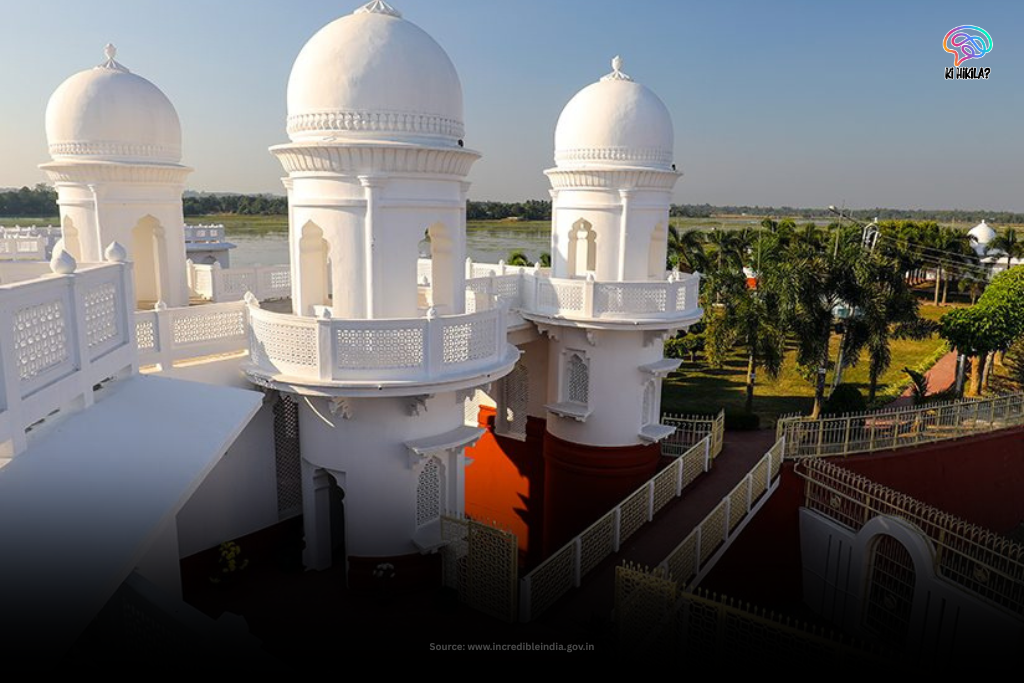
The Manikya Dynasty:
- The Manikya Kings ruled this region for over five centuries, with King Ratna Manikya I (15th century) being one of the earliest documented rulers.
- The dynasty’s influence extended beyond current state’s borders, at times reaching parts of Bengal and Assam.
- The capital shifted multiple times—Udaipur, Old Agartala, and finally Agartala, where the grand Ujjayanta Palace was built in the early 20th century.
Integration with India:
- Following India’s independence in 1947, Tripura acceded to the Indian Union on October 15, 1949 through a merger agreement.
- It became a Union Territory and was later granted full statehood on January 21, 1972 under the North-Eastern Areas (Reorganisation) Act.
Cultural and Religious Significance of Tripura:
- The Tripura Sundari Temple in Udaipur is one of the 51 Shakti Peethas and a major pilgrimage site, built by Maharaja Dhanya Manikya in the 16th century.
- State’s tribal populations also follow traditional animistic beliefs and customs, reflected in their festivals, dances, and rituals.
Colonial Period:
- Unlike many Indian princely states, Tripura retained a degree of autonomy during the British Raj.
- The kings had internal sovereignty while British authorities oversaw external affairs.
- The British introduced modern education and administrative reforms, including the establishment of the Ujjayanta Palace as the royal seat.
Tripura’s historical narrative is a blend of indigenous resilience, royal grandeur, and gradual integration with modern India. Its heritage monuments, temples, and archives provide rich material for historians, students, and heritage enthusiasts.
Geography & Climate
The state’s natural landscape is a blend of undulating hills, dense forests, fertile valleys, and flowing rivers—all shaped by a humid tropical climate. Despite being one of India’s smallest states, this region exhibits diverse geographical zones, making it ecologically rich and unique.
Topography
Tripura is divided into three major topographical regions:
- Hill Ranges:
- Five parallel ranges—Jampui, Longtharai, Shakhan, Baramura, and Atharamura—run north to south.
- These hills are home to tribal communities, bamboo forests, and orange orchards (especially in Jampui Hills).
- Valleys and Plains:
- The western region features fertile alluvial plains, ideal for rice and jute cultivation.
- These plains also host major towns like Agartala and Udaipur.
- Forests and Wetlands:
- Dense forests, swamps, and seasonal wetlands cover over 60% of the state’s area.
- These are rich in biodiversity and crucial for environmental balance.
Major Rivers, Mountains & Forests
- Rivers:
- Gomati, Manu, Khowai, Dhalai, and Haora are major rivers, originating from the hills and flowing into Bangladesh.
- Rivers serve as vital irrigation and drinking water sources.
- Mountains/Hills:
- Betlingchhip (Thaidawr) in the Jampui Hills is the highest peak in Tripura (approx. 939 meters).
- Hill areas are known for panoramic views, cool weather, and tribal settlements.
- Forests:
- Reserved and protected forests account for over 58% of Tripura’s area.
- Notable forest types: tropical moist deciduous, semi-evergreen, and bamboo brakes.
Climate and Seasonal Patterns
- Climate Type: Humid Subtropical
- Average Rainfall: 2,100 to 2,500 mm annually, mostly from June to September (monsoon).
- Temperature Ranges:
- Summer: 25°C to 35°C
- Winter: 10°C to 25°C
- Seasons:
- Summer (March–May): Hot and humid with occasional thunderstorms.
- Monsoon (June–September): Heavy rainfall and high humidity.
- Autumn (October–November): Mild and pleasant.
- Winter (December–February): Cool, ideal for tourism.
Tripura’s varied topography and favorable climate support a wide range of agricultural, ecological, and cultural activities. The balance between hills, rivers, and forests gives the state its distinct identity in the northeastern region of India.
Demographics
Tripura is a diverse and culturally rich state, home to a mix of tribal communities, Bengali-speaking populations, and various religious groups. Despite its small size, Tripura reflects a miniature model of multi-ethnic India, where different communities have coexisted harmoniously for centuries.
Population (Latest Data):
- 2011 Census Population: Approx. 3.67 million
- 2023 Estimated Population: Over 4 million
- Population Density: Around 350 persons per sq. km
- Urban Population: Nearly 26%, with Agartala as the urban center
- Rural Population: Over 74%, largely dependent on agriculture and forest-based livelihoods
Major Languages Spoken:
- Bengali: Widely spoken by the majority and used in official and educational contexts.
- Kokborok: The primary language of the Tripuri tribes and recognized as an official state language.
- English & Hindi: Used in administration, education, and inter-state communication.
- Other tribal languages: Reang, Chakma, Halam, Mizo, and others are spoken by smaller communities.
Ethnic Groups and Religions:
- Ethnic Composition:
- Indigenous Tribes (approx. 30%):
- Major groups: Tripuri, Reang (Bru), Jamatia, Chakma, Halams, and Mizos
- Each tribe has its own language, customs, attire, and governance systems.
- Bengali Community (approx. 70%):
- Predominantly migrated during the Partition and post-1971 Bangladesh Liberation War.
- Indigenous Tribes (approx. 30%):
- Religious Breakdown (2011 Census):
- Hinduism: ~83%
- Islam: ~8%
- Christianity: ~4% (mostly among tribal communities)
- Buddhism: ~3% (practiced by Chakma and some Mizo tribes)
Tripura’s demographic landscape is shaped by centuries of migration, tribal heritage, and cultural fusion. The state is known for its communal harmony, where traditional tribal festivals are celebrated with the same enthusiasm as Durga Puja or Eid.
Administrative Setup
Tripura’s administrative structure is designed to balance efficient governance with tribal autonomy and regional representation. The state follows the parliamentary system of governance, like the rest of India, but also has unique administrative features like the Tripura Tribal Areas Autonomous District Council (TTAADC) to empower indigenous communities.
Capital City and Major Cities:
- Capital:Agartala
- The largest and most developed city in the state.
- Serves as the political, economic, educational, and cultural hub.
- Located close to the Bangladesh border; has an integrated check post for cross-border trade.
- Other Important Cities/Towns:
- Udaipur: Known for Tripura Sundari Temple and historic importance.
- Dharmanagar: Major town in North Tripura, trade and transit center.
- Kailashahar: Culturally rich town with ancient temples and tribal presence.
- Ambassa: Administrative town in Dhalai district.
Districts:
Tripura has 8 districts, each with its own administrative headquarters:
- West Tripura
- South Tripura
- North Tripura
- Dhalai
- Khowai
- Sepahijala
- Unakoti
- Gomati
These districts are further subdivided into sub-divisions, blocks, and panchayats for grassroots governance.
Tripura Tribal Areas Autonomous District Council (TTAADC):
- Covers over 68% of the state’s area and is home to most tribal populations.
- Has its own governance framework, including elected members and legislative powers over land, forest, and local customs.
- Headquartered in Khumulwng, near Agartala.
Political Significance:
- Legislative Assembly Seats: 60 MLAs
- Parliamentary Constituencies:
- 2 Lok Sabha seats: Tripura West and Tripura East
- 1 Rajya Sabha seat
- Tripura has seen a dynamic political landscape, historically dominated by Left Front, followed by BJP and regional parties in recent years.
- Tribal representation through the Indigenous People’s Front of Tripura (IPFT) and similar parties has been a significant political development.
Tripura’s administrative system demonstrates how tribal identity, democratic governance, and modern development can coexist within a single state structure. It’s a powerful model of inclusive federalism in India’s northeast.
Culture and Traditions
Tripura is a vibrant mosaic of tribal traditions, royal customs, and Bengali influences—each enriching the state’s cultural fabric. With 19 recognized tribal communities, each with their own language, festivals, and dress, Tripura stands out as a place where diversity is celebrated with unity.
Traditional Clothing:
- Tribal Attire:
- Tripuri women wear a colorful handwoven dress called Rignai (lower garment) and Risa (upper cloth)—each tribe has its unique weaving pattern.
- Men typically wear loincloths (Rikutu) along with traditional shawls.
- Bengali Influence:
- Sarees and dhotis are common among the Bengali-speaking population, especially during religious occasions and weddings.
Major Festivals and Customs:
- Garia Puja:
- Celebrated by tribal communities in April to invoke blessings for a good harvest.
- Involves bamboo dancing, folk music, and sacrifices to the deity Garia.
- Durga Puja:
- A grand celebration among Bengalis in Agartala and other towns, marked by elaborate pandals and cultural events.
- Kharchi Puja:
- A 7-day state festival performed to worship the Fourteen Gods of Tripura.
- Held in Old Agartala, it combines tribal and Hindu rituals.
- Ker Puja:
- A sacred tribal festival that prohibits movement in certain areas during rituals. It is believed to protect the community from evil.
- Diwali, Eid, and Christmas are also celebrated by respective communities, showcasing Tripura’s religious harmony.
Dance, Music, and Art Forms:
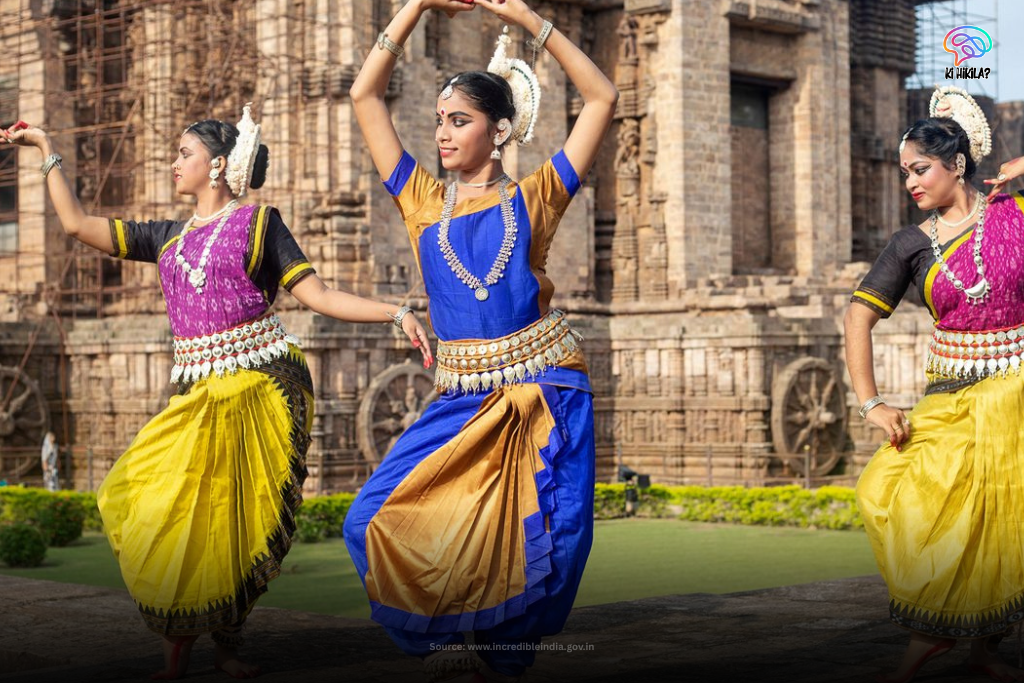
- Hojagiri Dance:
- Performed by the Reang tribe women, balancing on earthen pitchers while moving rhythmically—one of the most iconic dances of Tripura.
- Garia Dance:
- Folk Music:
- Mostly oral traditions, often revolving around nature, agriculture, and community life. Instruments are made from bamboo, gourds, and animal skin.
- Handicrafts:
- Tripura is renowned for bamboo and cane crafts, including furniture, mats, and decorative items.
- Traditional weaving using backstrap looms is common in tribal households.
Folklore and Legends:
- Tribal communities preserve their myths, ancestral tales, and heroic stories through song and storytelling.
- Many believe in animism, spirit worship, and oral codes of conduct handed down through generations.
- Local legends often revolve around nature deities, forest spirits, and ancestral protection.
Tripura’s culture is a living heritage, not just preserved in museums or texts, but practiced and performed in everyday life—from the lanes of Agartala to the remote hills of Jampui. It reflects a rare coexistence of ancient traditions and evolving identities.
Flora and Fauna
Tripura is a green gem of Northeast India, with over 60% of its land covered in forests. Its biodiversity-rich landscape supports tropical evergreen, semi-evergreen, and moist deciduous forests, home to rare species of plants, animals, and birds. This ecological richness has earned Tripura a notable place in India’s biodiversity map.
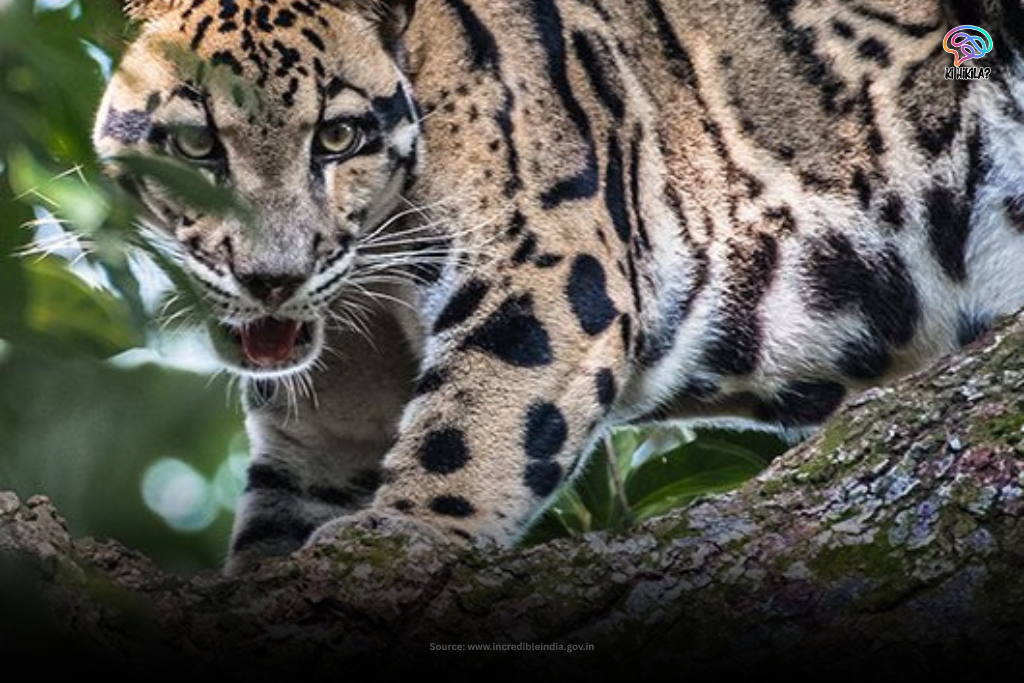
Native and Unique Plant Species:
- Bamboo: Tripura is known as the “Land of Bamboo”, with more than 21 species of bamboo found across the state. It is not only a natural resource but also a cultural symbol.
- Sal (Shorea robusta) and Teak (Tectona grandis): Commonly found hardwood trees.
- Medicinal Plants:
- Many tribal communities use traditional herbs for healing, including species like Amla, Tulsi, and Arjun.
- Orchids and Wildflowers: Especially found in hill forests, some are unique to the region.
Endangered or Iconic Animal Species:
- Clouded Leopard: The state animal of Tripura, elusive and found in protected forest areas.
- Barking Deer, Indian Bison (Gaur), Slow Loris, and Hoolock Gibbon also inhabit the dense forests.
- Elephants and Wild Boars are found in some hilly belts.
- Birds:
- The state is a haven for migratory and native birds, including hornbills, egrets, hill mynas, and kingfishers.
Important National Parks, Sanctuaries, and Biosphere Reserves:
- Sepahijala Wildlife Sanctuary
- Located near Agartala; famous for primates, birds, and captive clouded leopards.
- Houses a zoo, botanical garden, and artificial lake.
- Trishna Wildlife Sanctuary
- Located in South Tripura; rich in bamboo forests and water bodies.
- Home to Gaur (Indian Bison), various deer species, and migratory birds.
- Rowa Wildlife Sanctuary
- One of the smallest in India, located in North Tripura.
- Supports small mammals, birds, and a variety of flora.
- Gumti Wildlife Sanctuary
- Situated in South Tripura; has wetlands and hill forests.
- Known for elephants, leopards, and crocodiles.
Tripura’s flora and fauna are not just ecological assets—they are deeply interwoven with the culture, economy, and lifestyle of its people. Tribal traditions include forest worship, and many community festivals revolve around seasonal rhythms and ecological balance.
The state’s conservation efforts, though challenged by population pressure and development needs, are ongoing and supported by both government and local communities.
Economy
Tripura’s economy is primarily agrarian, supported by forestry, handicrafts, and a growing services sector. In recent years, the state has diversified its economic base with investments in natural gas, IT infrastructure, and bamboo-based industries, while still preserving its traditional livelihoods.
Main Industries:
- Agriculture:
- Employs more than 50% of the population.
- Predominantly rain-fed farming, with a focus on food grains and horticulture.
- Government initiatives like Tripura Horticulture Mission promote high-yield and organic farming.
- Natural Gas and Energy:
- Tripura has substantial natural gas reserves, used for power generation and industrial use.
- The Palatana Gas Thermal Project is one of Northeast India’s largest power projects.
- Handicrafts and Bamboo Industry:
- Known for high-quality bamboo furniture, baskets, and decorative items.
- Bamboo and cane crafts are both traditional and commercially significant.
- Information Technology:
- Development of IT parks in Agartala to encourage startups and BPO services.
- Focus on digital governance and online service delivery under the Tripura e-Governance Mission.
- Rubber Plantations:
- Tripura is India’s second-largest rubber producer after Kerala.
- Rubber-based industries are being promoted to generate rural employment.
Agricultural Produce and Cash Crops:
- Staple Crops:
- Rice, pulses, and maize are widely cultivated.
- Cash Crops:
- Rubber, tea, jackfruit, pineapple, and ginger.
- Tripura’s Queen Pineapple has Geographical Indication (GI) status for its exceptional sweetness.
- Horticulture:
- Encouraged as a climate-resilient economic activity; includes banana, papaya, litchi, and vegetables.
Contribution to India’s GDP:
- Tripura contributes modestly to India’s overall GDP but shows consistent growth in the primary and tertiary sectors.
- The state’s Gross State Domestic Product (GSDP) has grown steadily, especially due to improvements in power, roads, education, and urban development.
Tripura’s economy, though historically dependent on agriculture, is now evolving into a diverse and sustainable model, combining traditional industries with modern initiatives. Its focus on inclusive growth and eco-friendly development makes it a model for small states in India.
Tourism
Tripura may not be the most frequented Indian tourist destination, but it is undoubtedly one of the most underrated gems—offering a rich tapestry of royal palaces, ancient temples, lush green landscapes, lakes, hills, and tribal traditions. The state’s tourism potential lies in its diverse heritage, spiritual sites, and natural serenity.
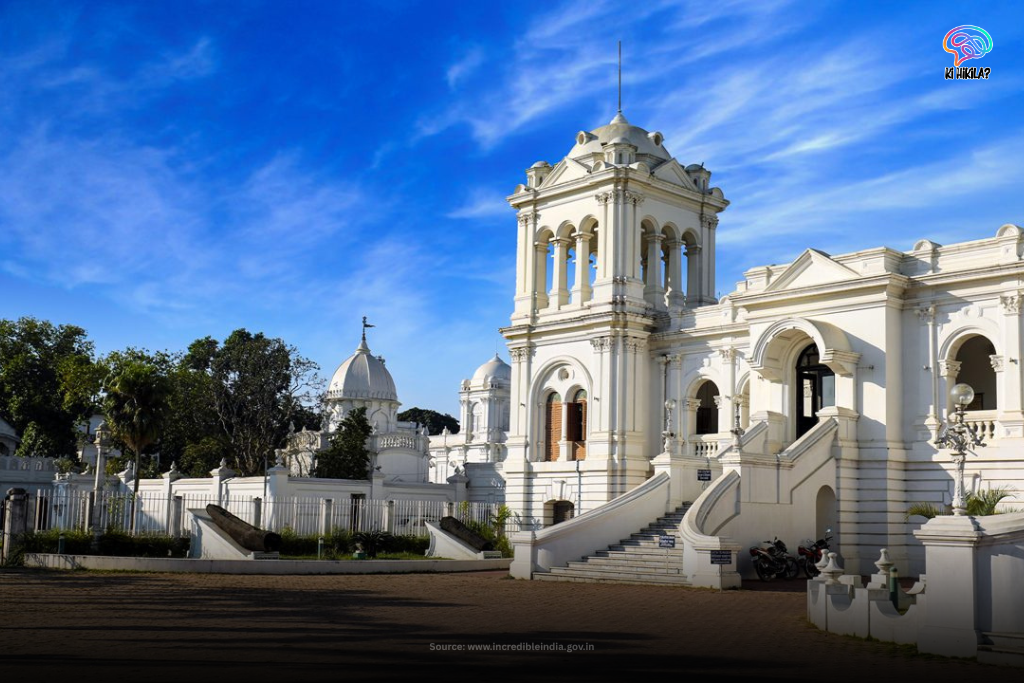
Top Attractions (Natural & Man-Made):
- Ujjayanta Palace (Agartala):
- Neermahal (Melaghar):
- Meaning “Water Palace,” it sits gracefully on Rudrasagar Lake.
- One of India’s few lake palaces, blending Hindu and Mughal styles.
- Unakoti Rock Carvings:
- An ancient Shaivite pilgrimage site featuring thousands of rock-cut sculptures carved into a hill.
- Believed to date back to the 7th–9th centuries.
- Jampui Hills:
- Known for its sunrise views, orange orchards, and pleasant climate.
- Ideal for eco-tourism, nature walks, and tribal culture exploration.
- Sipahijala Wildlife Sanctuary:
- Combines a botanical garden, zoo, and bird sanctuary in one.
- Great for families and nature lovers.
Spiritual and Religious Sites:
- Tripura Sundari Temple (Udaipur):
- One of the 51 Shakti Peethas, this red-roofed temple is dedicated to Goddess Tripura Sundari.
- Attracts thousands of pilgrims during Diwali and Navratri.
- Bhubaneshwari Temple (Udaipur):
- Located on the banks of the Gomati River.
- Immortalized in Rabindranath Tagore’s works during his visits.
- Fourteen Gods Temple (Old Agartala):
- Central to the Kharchi Puja, dedicated to the Chaturdasha Devata (Fourteen Deities) of the royal family.
Food Tourism – Local Cuisines and Street Food:
Tripura’s cuisine is simple yet flavorful, with heavy use of fermented foods, bamboo shoots, and fresh herbs.
- Mui Borok: The state’s traditional cuisine, often served with Berma (fermented fish).
- Gudok: A spicy mix of vegetables, fish, and fermented bamboo shoots.
- Wahan Mosdeng: Smoked pork salad with mustard oil and green chilies.
- Panch Phoron Tarkari: A Bengali-style curry made using five traditional spices.
- Street food in Agartala includes momos, chow mein, rolls, and sweets influenced by neighboring states.
Tripura’s tourism experience is quiet, authentic, and enriching. It offers something for everyone—history buffs, nature lovers, spiritual seekers, and cultural enthusiasts—away from the crowds and noise of mainstream tourist circuits.
Education and Institutions
Tripura has made remarkable progress in the field of education over the past few decades. Known for having one of the highest literacy rates among Northeastern states, the state has consistently prioritized inclusive and accessible education, especially in rural and tribal areas.
Literacy Rate:
- According to the 2011 Census:
- Overall Literacy Rate: 87.22%
- Male Literacy: 91.53%
- Female Literacy: 82.73%
- Tripura was once ranked second-highest in India in terms of literacy, just after Kerala.
Government programs, local community involvement, and focus on tribal education have significantly contributed to this success.
Major Universities and Colleges:
- Tripura University (Agartala):
- A Central University offering undergraduate, postgraduate, and doctoral programs in arts, science, commerce, and professional studies.
- National Institute of Technology (NIT), Agartala:
- One of the prestigious NITs in India, providing quality technical education and research opportunities.
- ICFAI University, Tripura:
- A private university offering programs in law, business, engineering, and management.
- MBB College (Maharaja Bir Bikram College):
- One of the oldest and most reputed colleges, affiliated to Tripura University, located in Agartala.
- Tripura Medical College and Dr. B.R. Ambedkar Memorial Teaching Hospital:
- Offers MBBS and postgraduate courses in medical sciences.
Educational Achievements and Highlights:
- Focus on tribal education:
- Special residential schools (EMRS), scholarships, and cultural inclusivity in curriculum.
- Digital initiatives:
- E-learning programs, online classes, and computer literacy promoted in schools post-pandemic.
- Vocational Training & Skill Development:
- The state encourages youth through ITI centers, polytechnics, and NSDC-aligned training programs to enhance employability.
- Women’s education:
- Significant progress made in girls’ enrollment in primary and higher education, supported by government schemes.
Tripura’s education system stands out for its blend of academic progress, skill development, and regional inclusion. With strong foundations and growing institutions, the state is poised to become an educational hub in the Northeast.
Transport and Connectivity
Tripura has transformed significantly in recent years in terms of infrastructure and connectivity, bridging its once-isolated position in India’s far northeast. With better roads, modern railway links, and improved air services, Tripura is now more accessible than ever—for both travelers and trade.
Roads, Highways, and Railways:
- National Highways:
- NH-8 (formerly NH-44) is the main lifeline, connecting Agartala to Guwahati via Assam, forming the longest and busiest route.
- NH-108 and NH-208 connect the interiors to Bangladesh and other northeastern states.
- State Highways and Rural Roads:
- Tripura has an extensive road network reaching deep into rural and tribal villages, supporting economic and emergency services.
- Rail Connectivity:
- Agartala Railway Station is linked to major Indian cities via the Lumding–Sabroom railway line.
- New rail lines connect Agartala to Dharmanagar, Kumarghat, Udaipur, and now Sabroom, close to the Bangladesh border.
- Tripura-Silchar and Tripura-Guwahati trains are frequently used for inter-state travel.
Airports and Ports:
- Maharaja Bir Bikram Airport (Agartala):
- The second busiest airport in Northeast India after Guwahati.
- Offers direct flights to Kolkata, Delhi, Guwahati, Bangalore, Mumbai, and seasonal connections to Bangladesh.
- Recently upgraded with a modern terminal and international status.
- Upcoming Connectivity with Chittagong Port (Bangladesh):
- The India-Bangladesh agreement allows Tripura to use Chittagong Port, boosting cross-border trade and logistics.
Public Transport Systems:
- Local buses and mini-buses connect towns and villages throughout the day.
- Autorickshaws, e-rickshaws, and taxis are commonly used within cities like Agartala.
- Tripura Road Transport Corporation (TRTC) operates state-run buses for intercity and long-distance travel.
International Trade and Transit Points:
- Akhaura Integrated Check Post (ICP):
- A major land port facilitating trade and movement between Agartala and Akhaura (Bangladesh).
- Plays a strategic role in India’s “Act East” policy and regional trade routes.
- Other border trading hubs: Srimantapur, Raghna, Khowai, and Manu.
Tripura’s transport network now connects it not only to the rest of India but also to international markets via Bangladesh. With ongoing projects like waterways development and rail upgrades, the state is fast becoming a logistics gateway in Northeast India.
Fun Facts & Trivia
Tripura is full of surprising details that reflect its cultural richness, historical depth, and natural uniqueness. Here are some engaging and lesser-known facts that make Tripura an exciting state to explore and study:
“Firsts” and “Biggest” Records:
- Neermahal is the only water palace in Northeast India, and one of only two such palaces in the country (the other is Jal Mahal in Rajasthan).
- Sepahijala Wildlife Sanctuary houses the only captive breeding center for clouded leopards in India.
- Tripura’s Queen Pineapple is the sweetest variety in India and has received a Geographical Indication (GI) tag.
- The state once ranked second in literacy rate (after Kerala), showing strong emphasis on education in a tribal-majority state.
Unique Cultural Facts:
- Tripura is one of the few Indian states with an Autonomous District Council (TTAADC) that governs tribal areas separately and preserves traditional law and customs.
- The Tripuri calendar, called “Tripurabda,” is still in use, especially for festivals and rituals.
- Garia Puja is not only a harvest festival but also an occasion for community bonding and matchmaking among tribes.
- The state’s bamboo dances, tribal tattoos, and weaving styles are not just art—they serve spiritual and storytelling purposes in indigenous life.
Celebrities and Personalities from Tripura:
- Papon (Angarag Mahanta): Though originally from Assam, he shares ethnic and cultural roots with Tripura’s music traditions.
- Pradyot Manikya Debbarma: Former royal family member, political leader, and cultural promoter, known for advocating tribal rights.
- Somdev Devvarman: Indian tennis player with family roots in Tripura.
- Bharat Bhushan Agarwal Award winner Chandan Pandey has brought recognition to Tripura’s Hindi literary scene.
From ancient rock carvings and water palaces to eco-tourism gems and cultural pride, Tripura offers plenty of unique facts that set it apart—making it a treasure trove for explorers, students, and researchers alike.
Conclusion
Tripura, though small in size, is enormous in heritage, culture, and ecological richness. Nestled quietly in India’s northeastern corridor, it is a land where hilltop temples stand beside royal palaces, where tribal rhythms blend with Bengali festivities, and where dense bamboo forests shelter rare wildlife.
It is a state that offers:
- A peaceful coexistence of diverse communities
- A blend of tradition and modern development
- Unique cultural practices, festivals, and crafts
- Natural beauty ranging from rivers and lakes to hills and sanctuaries
For students, Tripura provides ample educational material—from its royal history and tribal anthropology to its economic and environmental model. For travelers and explorers, the state is a hidden gem waiting to be unearthed, with rich stories carved into its rocks, lived through its people, and preserved in its forests.
Despite its geographical remoteness, Tripura is no longer isolated—it’s connected, vibrant, and increasingly influential in India’s northeastern development.
📌 Why should you learn about or visit Tripura?
Because it teaches us how diversity, tradition, resilience, and natural harmony can thrive side by side. It’s not just a place on the map—it’s a lesson in coexistence, identity, and quiet strength.
10 Must-Know FAQs About Tripura – Culture, History, Travel & More
Why is Tripura famous?
Tripura is renowned for its rich cultural heritage, royal palaces, traditional handicrafts, and scenic landscapes that include lush hills and dense forests.
What is special about Tripura?
The state stands out for its unique blend of tribal and Bengali cultures, high literacy rate, and ancient temples such as Tripura Sundari, one of the 51 Shakti Peethas.
What is Tripura known for in Indian history?
Historically, Tripura was a princely state ruled by the Manikya dynasty and was one of the few to voluntarily merge with the Indian Union in 1949.
What is the best time to visit Tripura?
The best time to visit Tripura is between October and March, when the weather is cool and pleasant for sightseeing, wildlife tours, and cultural festivals.
What are the top tourist attractions in Tripura?
Key attractions include Ujjayanta Palace, Neermahal (a water palace), Unakoti rock carvings, Sepahijala Wildlife Sanctuary, and Jampui Hills.
How is the connectivity and transport in Tripura?
Tripura is connected via NH-8, broad-gauge railways, and Maharaja Bir Bikram Airport in Agartala. Local transport includes buses, taxis, and auto-rickshaws. There’s also international connectivity with Bangladesh through land ports.
Is Tripura safe for travelers and tourists?
Yes, Tripura is considered safe for tourists, including solo travelers. Locals are generally welcoming, and tourism infrastructure is gradually improving.
What is the significance of the Tripura Sundari Temple?
It is one of the 51 Shakti Peethas and an important Hindu pilgrimage site. The temple is believed to be over 500 years old and is located in Udaipur, Tripura.
What is the traditional food of Tripura?
Tripuri cuisine includes Mui Borok, featuring fermented fish (berma), Gudok, Wahan Mosdeng (smoked pork), and bamboo shoot dishes. It is flavorful, organic, and uses minimal oil.
What makes Tripura unique among Indian states?
Tripura is unique for its tribal-majority population, dual cultural identity (tribal and Bengali), autonomous district council governance, and a harmonious mix of tradition, biodiversity, and history.


